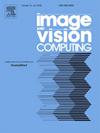利用乳房 X 射线摄影预测乳腺癌的机器学习应用
IF 4.2
3区 计算机科学
Q2 COMPUTER SCIENCE, ARTIFICIAL INTELLIGENCE
引用次数: 0
摘要
乳腺癌是导致女性癌症相关死亡的第二大原因。早期发现肿块并进行风险评估可大大改善预后。在乳房 X 光筛查中,放射科医生对乳房 X 光照片的判读容易出现高错误率,而且需要大量的人工操作。为此,人们提出了几种使用机器学习的计算机辅助诊断方法,用于在乳房 X 射线照相术中自动检测乳腺癌。在本文中,我们对这些方法进行了全面的回顾和分析,并讨论了与这些方法的可重复性相关的实际问题。我们的目的是帮助读者选择合适的方法,并引导他们实现这一目标。此外,我们还努力重新实施了所介绍方法的一个样本,以强调提供与这些方法相关的技术细节的重要性。利用机器学习推进乳腺癌病理分类领域的发展涉及公共数据库的可用性和创新方法的开发。尽管在这两个领域都取得了重大进展,但提高后者的透明度将促进该领域的进步。本文章由计算机程序翻译,如有差异,请以英文原文为准。
Machine learning applications in breast cancer prediction using mammography
Breast cancer is the second leading cause of cancer-related deaths among women. Early detection of lumps and subsequent risk assessment significantly improves prognosis. In screening mammography, radiologist interpretation of mammograms is prone to high error rates and requires extensive manual effort. To this end, several computer-aided diagnosis methods using machine learning have been proposed for automatic detection of breast cancer in mammography. In this paper, we provide a comprehensive review and analysis of these methods and discuss practical issues associated with their reproducibility. We aim to aid the readers in choosing the appropriate method to implement and we guide them towards this purpose. Moreover, an effort is made to re-implement a sample of the presented methods in order to highlight the importance of providing technical details associated with those methods. Advancing the domain of breast cancer pathology classification using machine learning involves the availability of public databases and development of innovative methods. Although there is significant progress in both areas, more transparency in the latter would boost the domain progress.
求助全文
通过发布文献求助,成功后即可免费获取论文全文。
去求助
来源期刊

Image and Vision Computing
工程技术-工程:电子与电气
CiteScore
8.50
自引率
8.50%
发文量
143
审稿时长
7.8 months
期刊介绍:
Image and Vision Computing has as a primary aim the provision of an effective medium of interchange for the results of high quality theoretical and applied research fundamental to all aspects of image interpretation and computer vision. The journal publishes work that proposes new image interpretation and computer vision methodology or addresses the application of such methods to real world scenes. It seeks to strengthen a deeper understanding in the discipline by encouraging the quantitative comparison and performance evaluation of the proposed methodology. The coverage includes: image interpretation, scene modelling, object recognition and tracking, shape analysis, monitoring and surveillance, active vision and robotic systems, SLAM, biologically-inspired computer vision, motion analysis, stereo vision, document image understanding, character and handwritten text recognition, face and gesture recognition, biometrics, vision-based human-computer interaction, human activity and behavior understanding, data fusion from multiple sensor inputs, image databases.
 求助内容:
求助内容: 应助结果提醒方式:
应助结果提醒方式:


